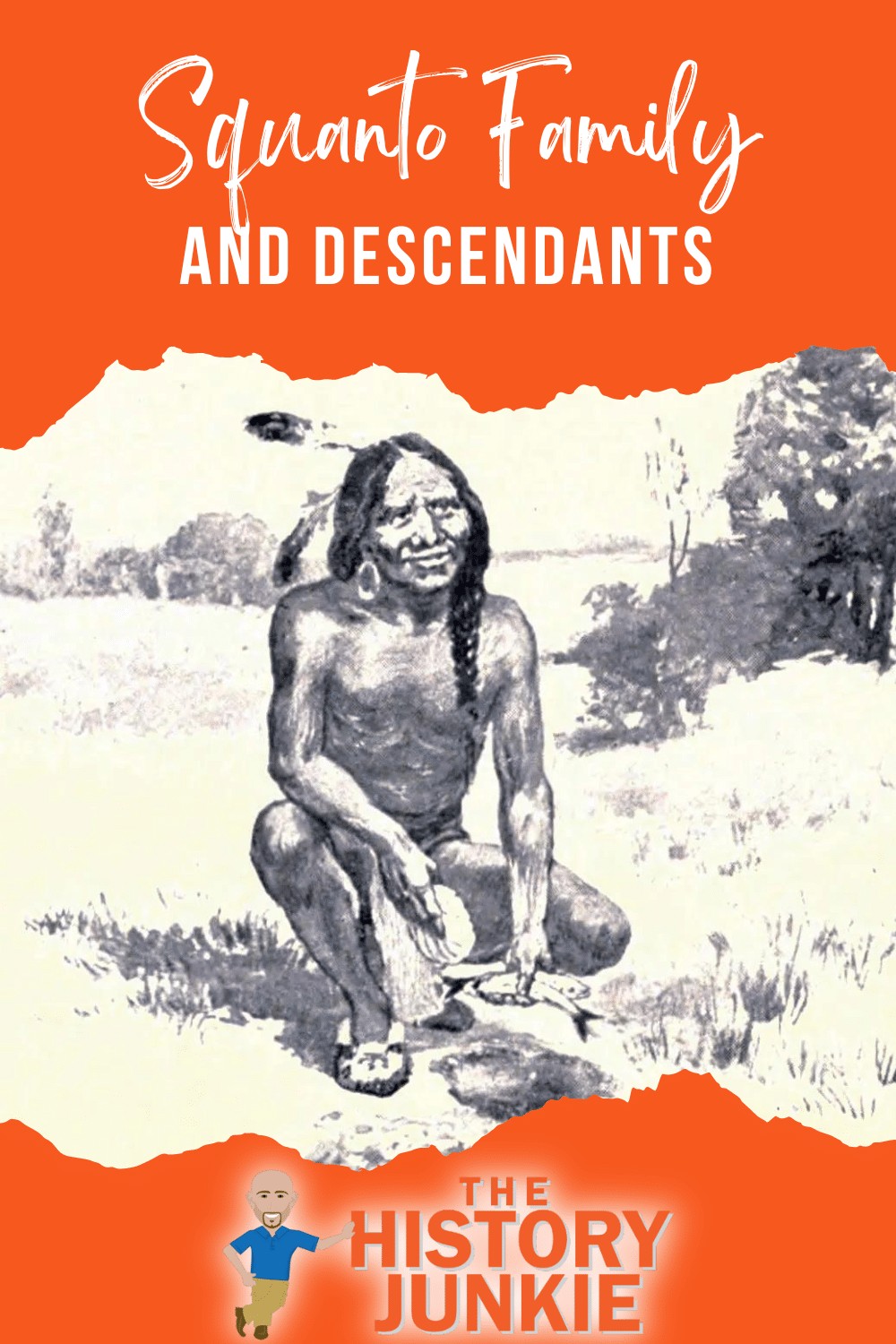Squanto was a native of Patuxet, a Wampanoag village in what is now Plymouth, Massachusetts.

Nothing is known about his early life, but his history begins in 1614 when Captain John Smith and his crew arrived to map Cape Cod and the surrounding area. Smith was a famous explorer who had previously been rescued by Pocahontas at the Jamestown Colony.
Jump to:
After Smith finished exploring the area, he left behind his associate, Thomas Hunt, to trade with the natives. Smith hoped to establish a plantation in New England, and so he wanted to build relationships with the local tribes.
Also Read: Famous Native Americans in American History
Hunt kidnapped Squanto and several other Patuxet villagers and took them to Spain. Hunt was viewed as a worthless man by Sir Fernando Gorges and others. His actions caused distrust between the natives and the English.
Of the 24 he captured, only 1 survived.
He escaped and eventually returned to North America in 1619, only to find that his entire tribe had been wiped out by smallpox.
Squanto went to live with the Wampanoag tribe, and in 1621, he was introduced to the Pilgrims at Plymouth. He was able to speak English, which made him an invaluable interpreter and guide.
He also taught the Pilgrims how to plant corn and other crops and how to fish and hunt.
Squanto's help was essential to the survival of the Pilgrims in early Colonial America. In the winter of 1620-21, many of the Pilgrims died from starvation and disease.
Also Read: Mayflower Passenger List
But with Squanto's help, they were able to harvest a successful crop of corn in the fall of 1621. This helped to ensure their survival through the winter, and it also allowed them to celebrate their first Thanksgiving feast.
Squanto's newfound power soon corrupted him. He realized that the Indians were afraid of the English, especially their guns and technology. He used this fear to his advantage, demanding tributes in exchange for his help or threatening to have the English release the plague against them.
Also Read: Famous Colonists in Colonial America
Squanto even tried to trick the Pilgrims into a show of military action by claiming that certain Indian groups were in a conspiracy together to fight the English. However, his treachery was eventually discovered by both the Pilgrims and the natives.
Chief Massasoit requested that Squanto be given to the tribe to be executed, but the timely arrival of another English ship and other trade goods caused Massasoit to drop the issue.
The rest of his life can be summarized by Caleb Johnson:
But Squanto's life was not to last long anyway. On one trip to trade for some corn seed for the subsequent growing season, he went with Governor Bradford south on the ocean-side of Cape Cod, and they pulled into Manamoyick Bay because of dangerous weather conditions. There, in November 1622, Squanto's nose began to bleed. He told Governor Bradford it was a sign among the Indians of death. He asked Bradford to pray for him so that he could go to the Englishman's God in Heaven when he died, and asked Bradford to give various things as gifts to his English friends back at Plymouth. Within a few days, he was dead.
Family Overview
The only known family Squanto had was his brother, who held some influence in the Wampanoag Confederacy.
His parents, possible spouse, and children are unknown, and most likely, he never married.
When he died, he left everything he had to English friends and also converted to Christianity.
Family Tree Chart
Parents:
Unknown Parents - Details of Squanto's parents are unknown, as is his earlier life.
Spouse:
None - There is no record of Squanto having a spouse.
Children:
None
Siblings:
Quadaquina (unknown) - Squanto was able to reunite with him in 1619 when he came back to the New World with the English in order to try and make peace with the Native Americans again.
